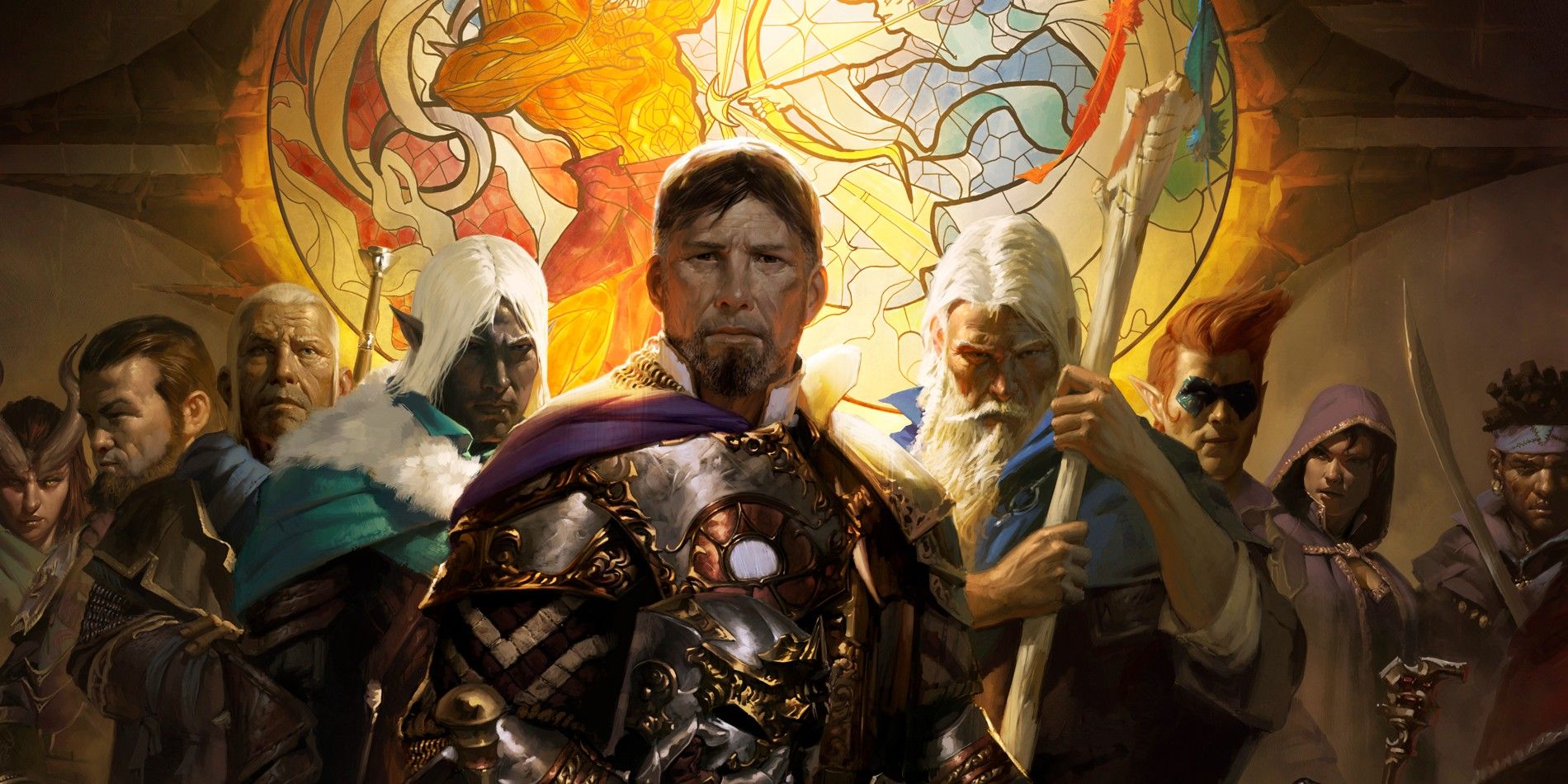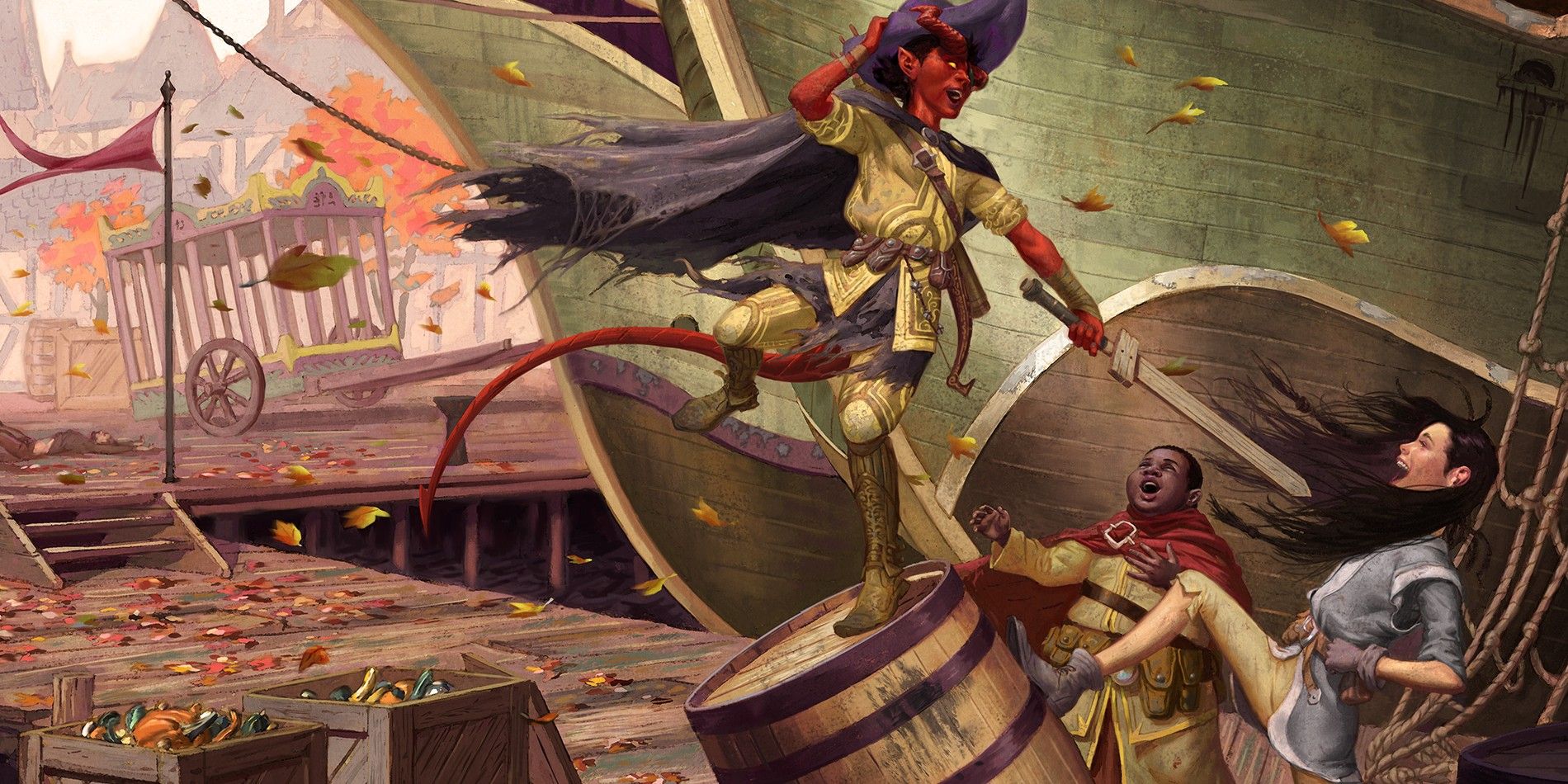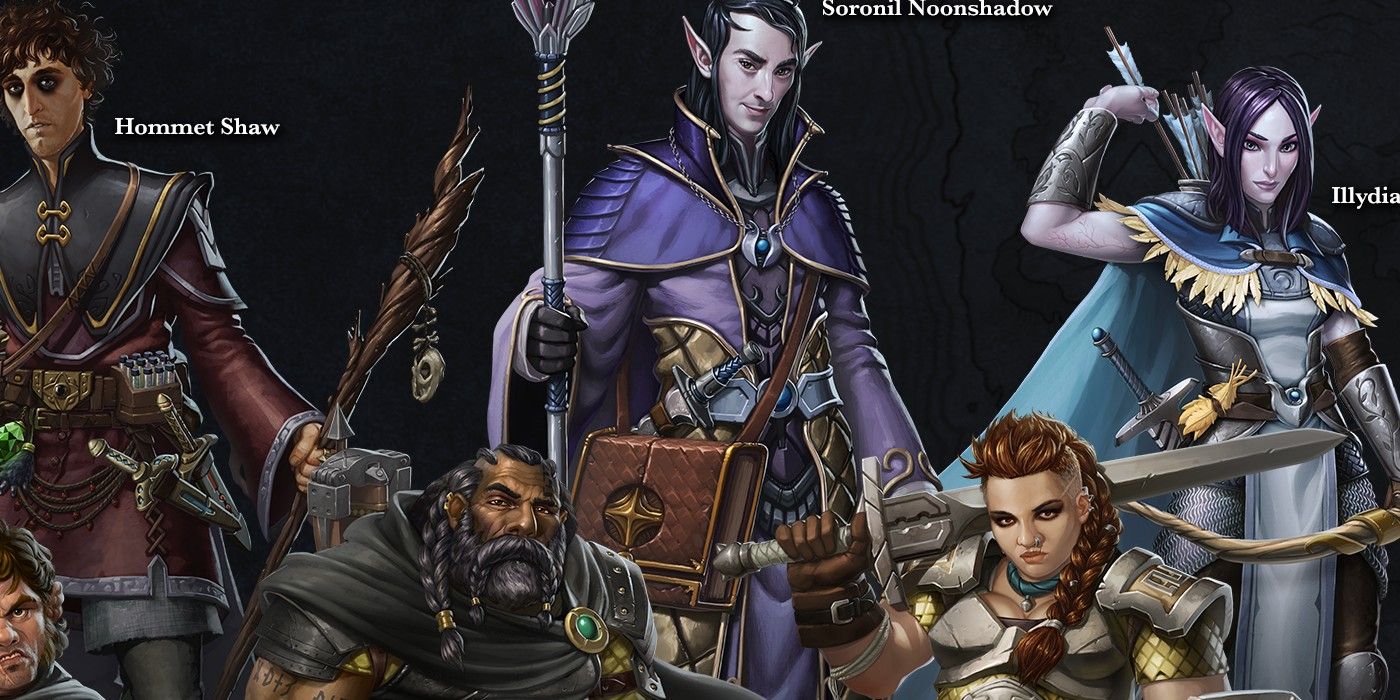Creating a well-balanced party is critical to success in Dungeons & Dragons, but with 5th edition’s emphasis on subclasses, choosing archetypes within each class is as important as selecting a class and race. For some classes, the subclass makes a huge difference in how that character will function in combat. A party with complementary subclasses can benefit from synergy between class features, with proper planning and teamwork, and avoid combinations that create redundancies. Most of these decisions should be made prior to the start of the campaign, during the character creation process. While many players begin a D&D game with an idea of the type of character they want to play, discussing the roles each party member expects to take on can allow the entire group to shine.
One way to aid the party in D&D is using a tank build for damage mitigation. There are several sub-classes which can help a character serve this function, and some can be aided by feats like Sentinel, which includes options similar to the Fighter “marking” mechanic from 4e D&D. For the traditional melee tank, the Sentinel feat is best paired with either a Totem Warrior sub-class Barbarian, or a Circle of the Moon Druid. The Totem Warrior can select the Bear Totem Spirit, which grants the Barbarian resistance to all damage types except Psychic. This, combined with the Barbarian’s generous d12 hit dice, allows them to safely engage in melee while also resisting most spell damage. It also makes healing them more efficient, using less spellcaster resources. The Moon Circle druid takes a different approach, with its focus on the Wildshape ability allowing it to quickly enter new animal or elemental forms, gaining a fresh pool of hit points with every shift, thereby also reducing the burden on party healers.
There are other ways to reduce enemy damage beyond the melee approach in D&D. The Oath of the Ancients sub-class for Paladins grants an aura that provides resistance to all spell damage for them and nearby allies. This is a case where party planning and synergy comes into effect, as a group with an Oath of the Ancients Paladin offers less incentive for a Totem Warrior Barbarian build. Multiple sources of resistance do not stack, so a Barbarian partying with an Ancients Paladin might prefer to focus on offense with the Path of the Berserker.
Proper Subclass Planning Lets A D&D Party Avoid Redundancy
A D&D Battle Wizard specialized in the School of Abjuration may seem an unlikely party defender, but it is one of the most effective. The subclass offers an Arcane Ward which can absorb damage taken by the Wizard, and later a Projected Ward which allows the ward to absorb attacks against nearby allies. At higher level, Improved Abjuration allows the Wizard to add their proficiency bonus to ability checks made as part of casting spells like Counterspell and Dispel Magic. This makes the Abjuration Wizard among best suited characters in the game to shutting down enemy spellcasters, along with melee builds using the Mage Slayer feat, as the Wizard can reserve their reaction to Counterspell an enemy’s spell. With Improved Abjuration, they have better odds of countering enemy spells than any other class.
Offense is also vital in D&D, as putting enemies down quickly means less attacks coming at the party. With the D&D Fighter’s Extra Attack feature scaling beyond any other martial class, with up to four attacks rather than two, the Fighter of 5e D&D is more suited to a focus on damage than defense. A fighter built around ranged damage, with feats like Crossbow Expert and Sharpshooter, makes a better archer than a Ranger, and the Battle Master sub-class aids this perfectly. The Fighter’s Archery Combat Style adds +2 to hit with ranged weapons, which can help offset the -5 to hit/+10 to damage feature of the Sharpshooter feat. Adding in the Battlemaster’s Precision Attack Maneuver, the Fighter can expend Superiority Dice to turn near-misses into hits, adding to their damage output. Spellcasters can aid the Fighter in their focus on damage with spells like Haste at lower level, up to the extremely powerful level 9 Spell Foresight, which grants advantage to all attacks.
There are many other subclass choices which groups should discuss when planning their party. A Draconic Bloodline subclass Sorcerer can combine the Elemental Affinity feature with the Elemental Adept feat to focus on mastering a single element for optimum area-of-effect damage. A Cleric could take the Life Domain to focus on the most efficient healing possible, or they could select the more offense-oriented Light Domain to gain access to damage spells like Fireball and serve as both a healer and a well-armored blaster.
Subclasses Can Make D&D Characters Unique, But Also Team Players
Skills are a crucial component of D&D, and the Rogue and Bard classes both receive Expertise which allows them to excel at select skills by doubling their proficiency. Groups can coordinate to ensure their skill-based characters cover a variety of specializations, as one might have a higher Wisdom score and focus on Expertise in detection skills like Insight and Perception, while another might become the “face” of the party with Expertise in Charisma skills such as Deception and Persuasion. A Mastermind sub-class rogue can further aid the party in battle by using the Help action as a bonus action against targets within 30 feet. They can coordinate this with party spellcasters using attack-roll based spells like Ray of Enfeeblement to help ensure these spells hit their target. Alternatively, a College of Lore Bard can work well with an Assassin rogue, as the Assassinate ability’s automatic critical hit feature can double the damage dice gained from a Valor Bard’s Combat Inspiration.
Dungeons & Dragons is a cooperative game, and sub-classes let each player portray a character that showcases a unique specialization, while working with other party members to help the entire group to excel. As some sub-class features do create redundancy, like the Oath of the Ancients Paladin and the Bear Totem Barbarian builds, discussing both class and subclass choice can ensure that parties have abilities that complement one another, avoiding overlap and ensuring optimal party effectiveness. Subclasses are a way for characters develop uniqueness, standing out from their class with their added specialization, but they can also provide new ways for the group to work together.



